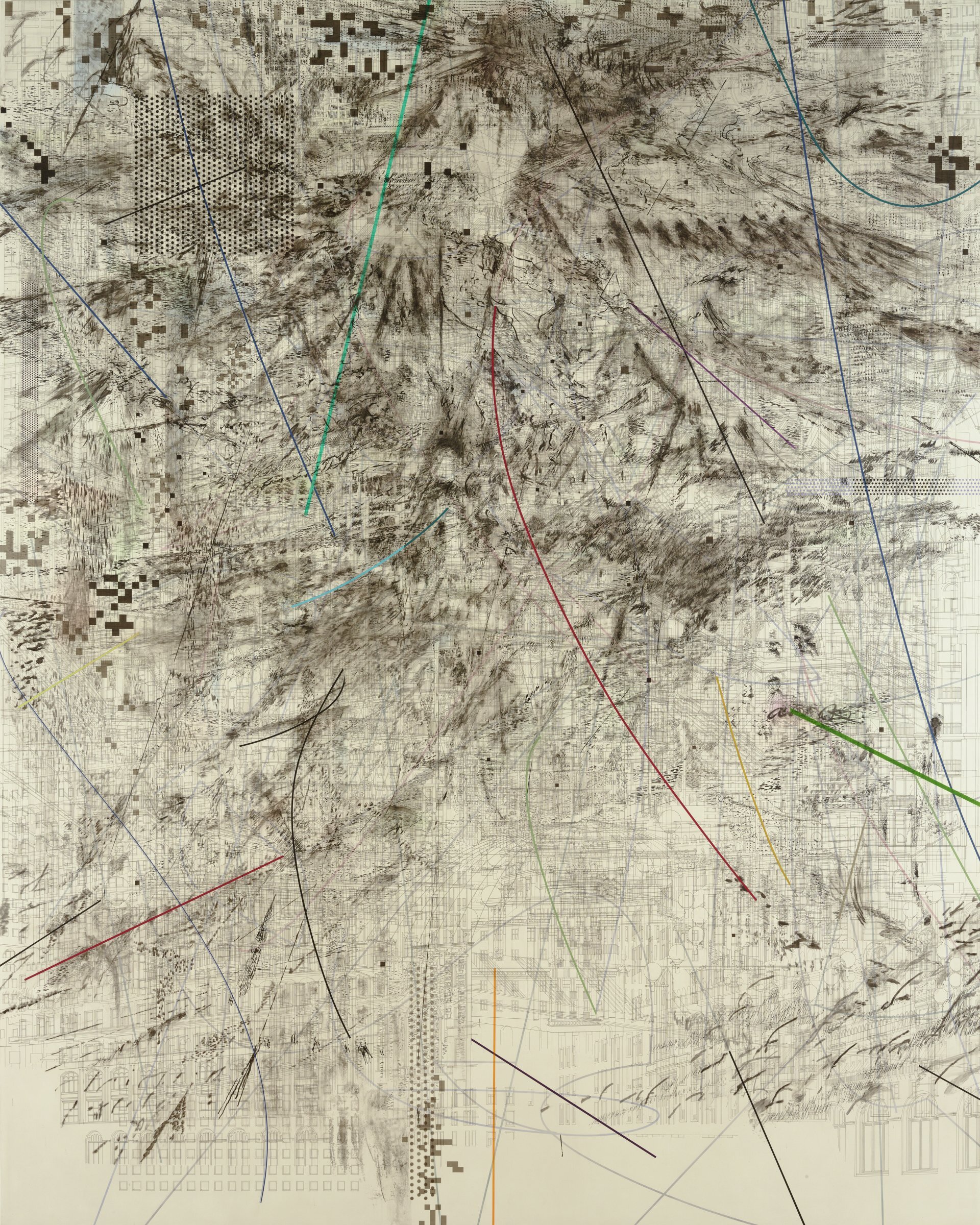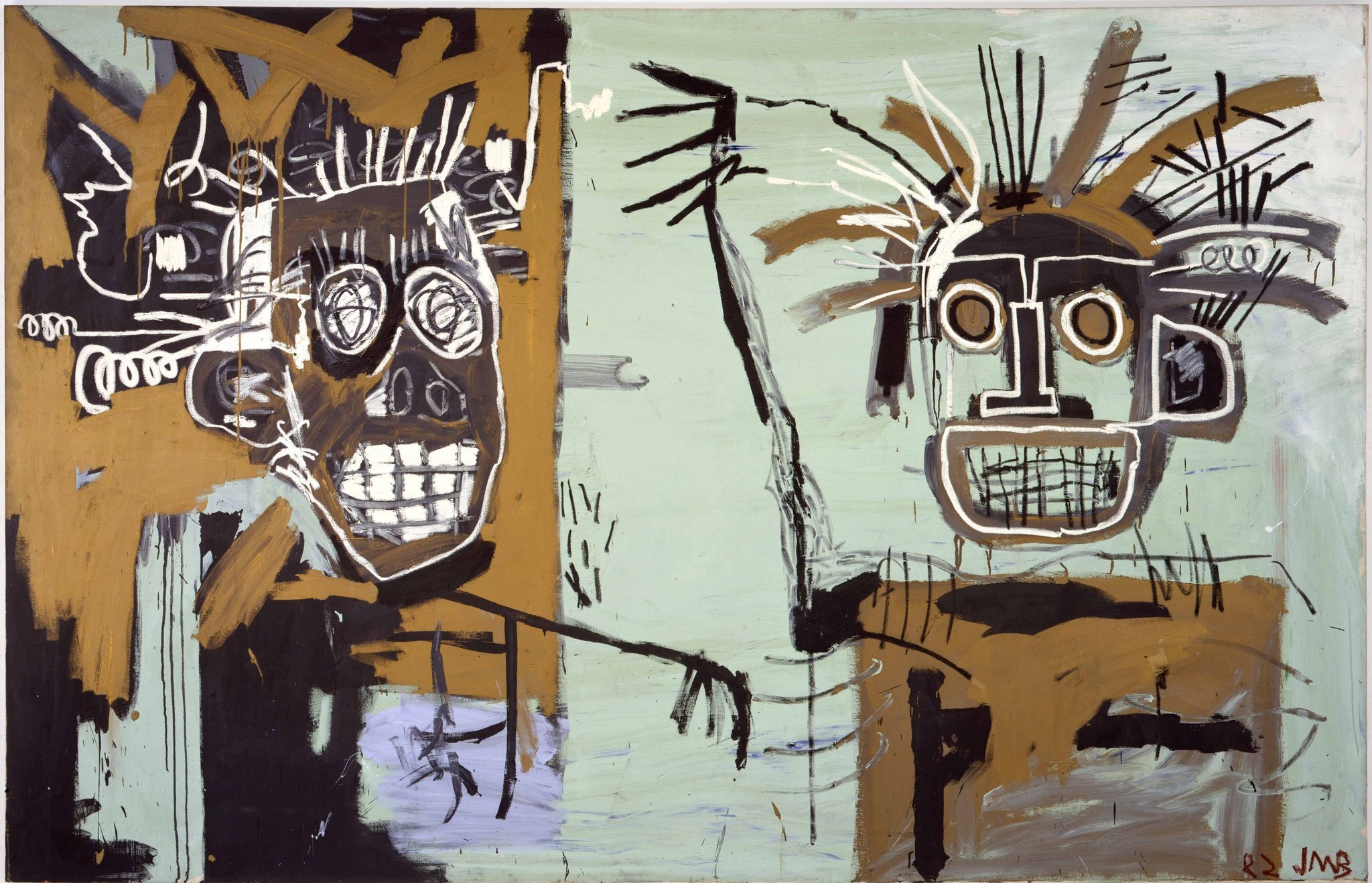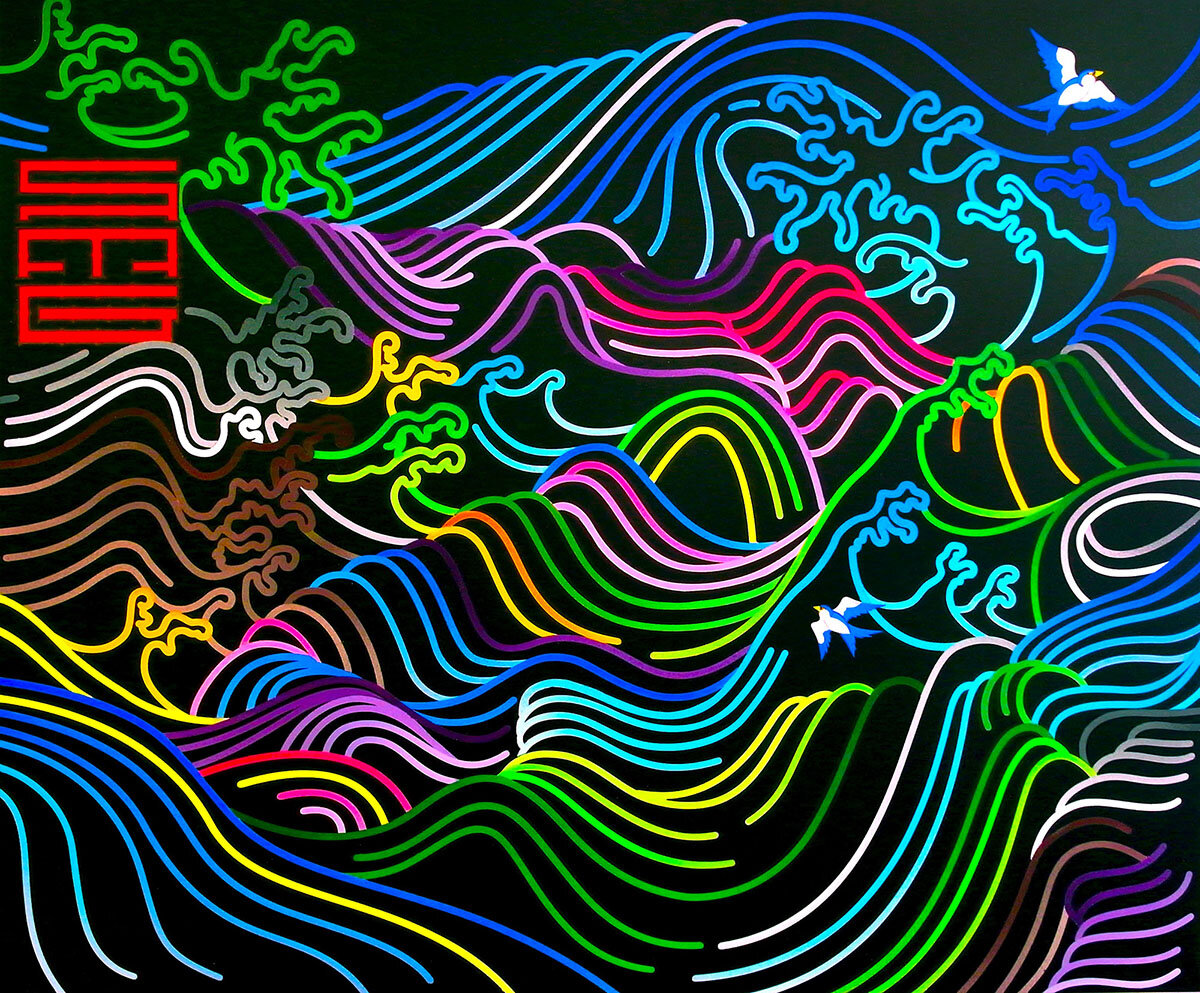Mark Making
Artists make marks in all sorts of ways, the physical act (the gesture) of mark making creates a direct communication from the artist to the viewer.
“When I say artist I mean the man who is building things - creating molding the earth - whether it be the plains of the west - or the iron ore of Penn. It's all a big game of construction - some with a brush - some with a shovel - some choose a pen.”
(Jackson Pollock 1912-1956)
Jackson Pollock Alchemy 1947 (Guggenheim New York)
“Alchemy is one of Jackson Pollock’s earliest poured paintings, executed in the revolutionary technique that constituted his most significant contribution to twentieth-century art.” ( Lucy Flint Guggenheim online)
Find out more about this piece by clicking on the link below.
https://www.guggenheim.org/artwork/3482
Julie Mehretu (Born 1970)
“I think of my abstract mark-making as a type of sign lexicon, signifier, or language for characters that hold identity and have social agency. The characters in my maps plotted, journeyed, evolved, and built civilizations. I charted, analyzed, and mapped their experience and development: their cities, their suburbs, their conflicts, and their wars. The paintings occurred in an intangible no-place: a blank terrain, an abstracted map space. As I continued to work I needed a context for the marks, the characters. By combining many types of architectural plans and drawings I tried to create a metaphoric, tectonic view of structural history. I wanted to bring my drawing into time and place.”
(Laurie Firstenberg, "Painting Platform in NY", Flash Art Vol. XXXV No. 227, November | December 2002, p. 70
Julie Mehretu, Retopistics: A Renegade Evacuation, 2001. (Crystal Bridges Museum of American Art, Bentonville, AR. © Julie Mehretu, photo: Erma Estwick.)
https://walkerart.org/calendar/2021/julie-mehretu
“Mehretu’s points of departure are architecture and the city, particularly the accelerated, compressed and densely populated urban environments of the 21st Century. Her canvases overlay different architectural features such as columns, façades and porticoes with geographical schema such as charts, building plans and city maps and architectural renderings, seen from multiple perspectives, at once aerial, cross-section and isometric. Her paintings present a tornado of visual incident where gridded cities become fluid and flattened, like many layers of urban graffiti. Mehretu has described her rich canvases as “story maps of no location”, seeing them as pictures into an imagined, rather than actual reality. Through its cacophony of marks, her work seems to represent the speed of the modern city depicted, conversely, with the time-aged materials of pencil and paint.” (https://whitecube.com/artists/artist/julie_mehretu)
Julie Mehretu, Stadia II, 2004, ink and acrylic on canvas, 108 x 144 inchesJulie Mehretu American, born Ethiopia, 1970 (Carnegie Museum of Art, Pittsburgh)
“Mehretu has long explored the use of abstraction in service of revolution and utopian politics throughout the history of Modernist art, “I am (...) interested in what Kandinsky referred to in ‘The Great Utopia’ when he talked about the inevitable implosion and/or explosion of our constructed spaces out of the sheer necessity of agency. So, for me, the coliseum, the amphitheater, and the stadium are perfect metaphoric constructed spaces.” These can represent both the organized sterility of institutions and the “chaos, violence, and disorder” of revolution and mass gathering.”
Find out more about this piece by clicking on the link below:
https://www.khanacademy.org/humanities/ap-art-history/global-contemporary/a/julie-mehretu-stadia-ii
Mogamma (A Painting in Four Parts Part 2 2012) Julie Mehretu 2012
Julie Mehretu talks about this work below:
Jean Michel Basquiat (1960-1988)
“At a casual glance Basquiat’s paintings look as if they’d been made by a brilliant, autodidactic schizophrenic driven to download his inner demons, obsessions and fantastical ideas by whatever means possible. He worked rapidly with brushes, oil-stick markers, spray paint and other implements on small sheets of paper; roughly cobbled constructions of found boards and stretched fabric; an old wooden door; and large, professionally made canvases. You can imagine the creative persona Basquiat’s art conjures, muttering and chortling to himself while compulsively improvising his chartlike compositions of cartoon images, glyphic signs and enigmatic word lists.”
Ken Johnson New York Times Art Review Feb. 21, 2013
Find out more about Jean Michel Basquiat by clicking on the link below:
Jean Michel Basquiat Untitled 1982
Frank Auerbach (Born Berlin 1931)
‘What counts most in Auerbach’s work is the sense it projects of the immediacy of experience – not through the facile rush of most neo-expressionist painting, but in a way that is deeply mediated, impacted with cultural memoires and desires which do not condescend to the secondhand discourse of quotation.’ (Robert Hughes)
Frank Auerbach created many drawings as preliminary work for his paintings.
To the studios 1979-80 (a set of four drawings)
To the Studio 1982-83
Find out more about Frank Auerbach and this work below:
https://www.richardgreen.com/artwork/bt155-frank-auerbach-to-the-studios-a-set-of-four-drawings/
Sush Machida Gaikotsu (born 1973)
Moon Over Marine (?)
“Colors so bright they ricochet into your eyes, hypnotic patterns that sear the senses: Sush Machida’s paintings catapult Pop Art into the metamodern realm. In Twenty Years in Vegas at Sahara West Library, the telltale markers of Pop Art present themselves — action heroes culled from TV series, packaging shed from consumer culture — but Machida’s work won’t cozy up next to Andy Warhol’s Campbell’s soup cans for long. There’s too much irony. Or sincerity. Or both.The visual and emotional complexity in Sush’s art is partly a by-product of his Japanese-American identity. Born in Japan and trained in Western painting, Sush discovered the visual traditions of his homeland via 19th-century French artists inspired by Japanese woodblock prints. Classic Japanese aesthetic concepts — awe at the transience of life, respect for emptiness that is never really empty, reverence for beauty in imperfection — influenced him in subtle ways. In 1992, at 18, he moved to the U.S. and spent a lot of time on a snowboard. Seven years later, Dave Hickey poached him from Utah State University for UNLV’s Art MFA program. At that point, Sush was making dense, sexualized mixed-media works, collaging nudies onto painted Japanese seascapes with heaping patterns of salacious curves (bodies, water, fish) and dots (nipples) in contrasting colors. Motifs that would later earn his renown — waves, clouds, fauna, and dots — were already in place.” https://knpr.org/desert-companion/2019-03/visual-art-old-meets-new-meets-wow
Hypersonic Nocturn 2009
Sush Machida working in his studio click below:
https://www.youtube.com/watch?v=KW5Wqjr9wrs
Sculpture can be the result of a mark and then translated through a particular materials or phenomena.
Massimo Uberti (born 1966)
"I realize drawings with a pencil on the paper and then bit by bit I build up particulars. Then when the project starts to take shape but mostly to make any sense, by that time and only then the drawings are being digitally transferred for blueprints. Then we go to physical implementation in the shop searching to reduce any findings or improvements with replacements or additions that improve the overall quality. The whole process "artisanal" made of invention on one hand and technique on the other hand lead to the final construction of the work like we see it exhibited." https://www.fart-neon.com/en/newsandpress-pkv1/art/interview-with-massimo-uberti.html
Città Ideale, omaggio a Giulio Romano 2018 – Mantova, Palazzo Ducale – Neon e trasformatori (courtesy photo: Paolo Bernini)
Casaluce (2017) – LED, trasformatori e ferro – installazione realizzata in occasione delle Olimpiadi Invernali in Corea – Como, Collezione Fondazione Volta (courtesy photo: Rohspace. https://www.lucenews.it/la-luce-come-spazio-possibile/)
Placing a found material or a combination of materials can make a mark/marks.
Eva Hesse (1936-1970)
Untitled, 1969-1970, latex, rope, string, and wire dimensions variables, (Courtesy of Hauser & Wirth, © The Estate of Eva Hesse)
“Weary of her inability to fully express her creations on paper, she used ropes found in her studio to extend the lines in her drawings into space: this marked the start of her mature period (1965-1970).” (https://awarewomenartists.com/en/artiste/eva-hesse/)
See more of Eva Hesse’s work below:
https://www.youtube.com/watch?v=K1gkIl6pxr4&feature=emb_rel_pause
Alejandro Durán (Born 1974)
Washed Up: Transforming a Trashed Landscape (2015)
Washed Up: Transforming a Trashed Landscape (2015)
WASHED UP: Transforming a Trashed Landscape
”Washed Up is an environmental installation and photography project that transforms the international debris washing up on Mexico's Caribbean coast into aesthetic yet disquieting works.
Over the course of this project Durán has identified plastic waste from fifty-eight nations and territories on six continents that have washed ashore along the coast of Sian Ka'an, one of Mexico's largest federally protected reserves and a UNESCO World Heritage site. He uses this international debris to create color-based, site-specific sculptures that conflate the hand of man and nature. At times he distributes the objects the way the waves would; at other times, the plastic mimics algae, roots, rivers, or fruit, reflecting the infiltration of plastics into the natural environment.
More than creating a surreal or fantastical landscape, these installations mirror the reality of our current environmental predicament. The resulting photo series depicts a new form of colonization by consumerism, where even undeveloped land is not safe from the far-reaching impact of our culture of disposable products. The alchemy of Washed Up lies not only in transforming a trashed landscape, but in the project’s potential to raise awareness and change our relationship to consumption and waste.” (Alejandro Durán)
Alejandro Durán talks about his work here:
https://alejandroduran.com/speaking
More works from this project:
https://www.artpeoplegallery.com/washed-up-transforming-a-trashed-landscape-by-mexican-artist-alejandro-duran/
















